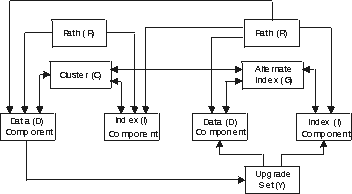 z/OS DFSMStvs Administration Guide
z/OS DFSMStvs Administration Guide
 z/OS DFSMStvs Administration Guide
z/OS DFSMStvs Administration Guide
|
Previous topic |
Next topic |
Contents |
Contact z/OS |
Library |
PDF
SHOWCAT—display the catalog z/OS DFSMStvs Administration Guide GC52-1388-00 |
|
|
The information shown here is provided for compatibility only. The SHOWCAT (show, or display, the catalog) macro enables you to retrieve information from a catalog independently of an open data set defined in the catalog. The SHOWCAT macro has three forms: standard, list, and execute. Although the integrated catalog facility catalog have different structures, the SHOWCAT macro supports integrated catalog facility catalogs. Thus, all references to catalogs in this discussion of the SHOWCAT macro apply to integrated catalog facility catalogs. You can use the IGGSHWPL macro to generate a DSECT statement and labels for the fields in the parameter list for SHOWCAT. The entries in a catalog are interrelated. More than one entry
is required to describe an object and its associated objects; one
entry points to one or more other entries, which point to yet others.
Figure 1 shows the interrelationship among
entries that describe the following types of objects:
For example, an alternate-index entry points to the entries of its data and index components, its base cluster, and its path. SHOWCAT enables you to follow the arrows in Figure 1. You first issue SHOWCAT on the name of an object. Figure 1. Interrelationships among catalog
entries. An arrow indicates a pointer from one entry to
another.
 The information VSAM returns to you includes the control interval numbers of catalog records in entries describing associated objects. You then issue SHOWCAT on a control interval number to retrieve information from one of these other entries. The first time you issue SHOWCAT, VSAM searches VSAM catalogs in
the following order to locate the entry that describes the object
you name:
VSAM returns the address of the access method control block that defines the catalog. In subsequent use of SHOWCAT, you can specify that address, which causes VSAM to search only that catalog. SHOWCAT should not be used for UNIX files because UNIX files are not reflected in the catalogs. Specifying the path name in the NAME parameter is not valid and returns unpredictable results. SHOWCAT is valid in AMODE 24 mode only. 


|
 Copyright IBM Corporation 1990, 2014 Copyright IBM Corporation 1990, 2014 |